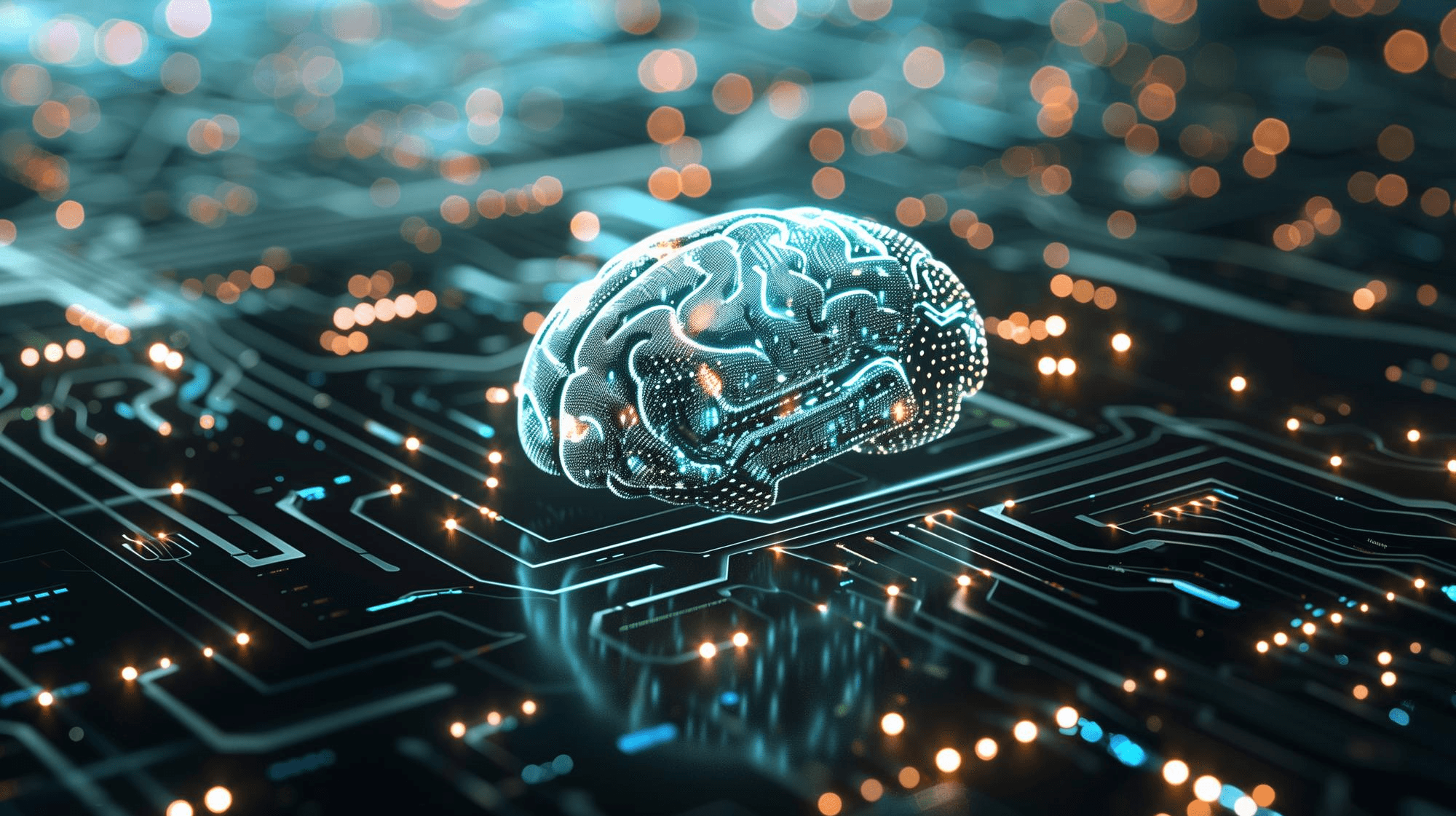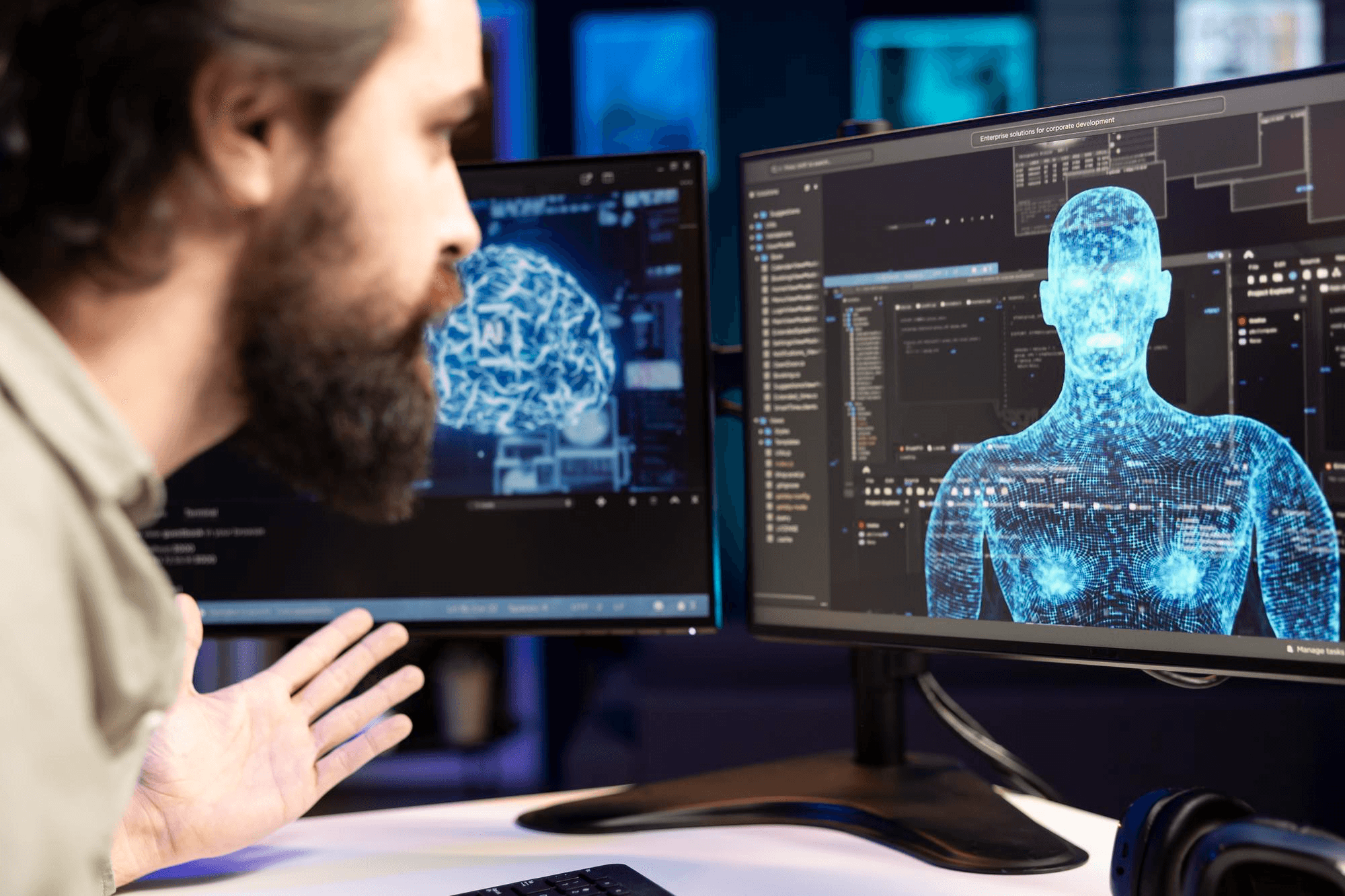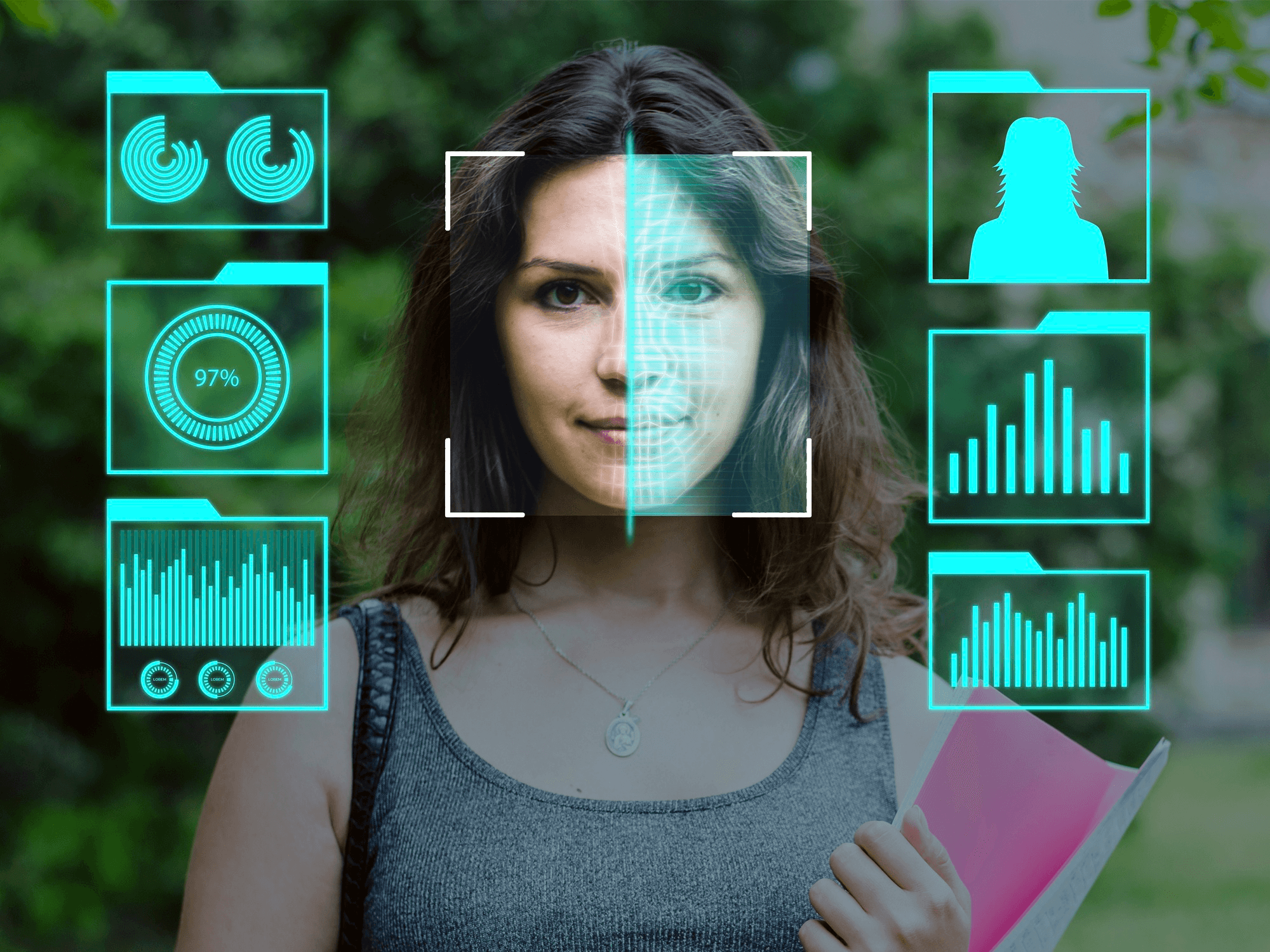What is Deep Learning in Artificial Intelligence?
Have you ever wondered how your smartphone instantly recognizes your face or how self-driving cars navigate complex road conditions? The answer lies in deep learning.
Deep learning is a subset of artificial intelligence that helps machines learn and make decisions in ways that copy the human brain.
In this blog post, we will learn more about deep learning in artificial intelligence, its fundamental concepts and applications across various industries, and the mysteries behind this cutting-edge technology.
What is Deep Learning?

Deep learning is a subfield of machine learning that uses artificial neural networks to process and learn from large amounts of data. These neural networks are designed to copy the structure and function of the human brain, with multiple layers of interconnected nodes that can learn to recognize patterns and make predictions.
Unlike traditional machine learning algorithms that require explicit feature engineering, deep learning models can automatically extract and learn the most relevant features from raw data.
Different Kinds of Deep Learning in Artificial Intelligence
There are several different kinds of deep learning algorithms used in artificial intelligence (AI).
Here are some of the main types:
Convolutional Neural Networks (CNNs): These are really good at working with visual data, like images and videos. They can automatically learn the important features in the data, which makes them great for things like recognizing objects in a picture or classifying different types of images.
Recurrent Neural Networks (RNNs): These are designed to work with sequential data, like text or speech. They can remember information from previous inputs, which helps them make better predictions or decisions about the current input. RNNs are often used for tasks like translating between languages or generating human-like text.
Long-Short-Term Memory (LSTMs): These are a special type of RNN that is really good at remembering long-term information in sequential data. They are commonly used for tasks like language modeling, machine translation, and speech recognition.
Generative Adversarial Networks (GANs): These are made up of two neural networks that work against each other. One network tries to generate new, realistic-looking data, like images, while the other tries to figure out whether the data is real or fake. This competition helps the networks improve at creating and recognizing the data.
Autoencoders: These are neural networks that learn to compress and then reconstruct the original input data. They can be used to find the most important features in the data or to detect when something is unusual or different from the normal data.
Deep Reinforcement Learning: This combines deep neural networks with reinforcement learning, where an AI agent learns by interacting with its environment and receiving rewards or punishments for its actions. This technique can be used to teach AI agents how to play games or control robots very well.
Transformer Models: Deep learning models are particularly good at working with language data. They use a special attention mechanism to understand the relationships between different parts of the text, which helps them do things like translate between languages or answer questions about a passage of text.
Each of these different deep learning techniques has its strengths and is used for different kinds of AI tasks.
Why is Deep Learning Important?

Deep learning is important for a few key reasons:
Powerful Pattern Recognition
Deep learning algorithms are incredibly good at identifying complex patterns and features in data, far beyond what traditional machine learning methods can do. This allows deep learning to excel at tasks like image recognition, natural language processing, and speech recognition.
Automatic Feature Extraction
Deep learning models can automatically learn the most relevant features from raw data without the need for manual feature engineering. This makes them much more versatile and scalable than older machine-learning techniques.
Handling Large and Complex Data
Deep learning thrives on large, complex datasets. As the amount of digital data in the world continues to grow exponentially, deep learning becomes increasingly powerful and valuable.
Achieving Human-Level Performance
In many specialized domains, deep learning models have now surpassed human-level performance, such as playing complex games like chess and Go. This demonstrates the incredible capabilities of deep learning.
Enabling New Applications
The power of deep learning has enabled the development of amazing new applications, from self-driving cars to automated medical diagnosis to human-like language generation. Deep learning is transforming industries and opening up new realms of possibility.
How Does Deep Learning Work?
Deep learning is about teaching computers to learn from data in a way that mimics the human brain. It employs artificial neural networks, which are complex structures inspired by the biological neural networks in our brains.
Neural Networks
Neural networks are at the core of deep learning. These networks consist of interconnected layers of nodes or neurons. Each neuron processes information and passes it on to the next layer.
Input Layer: Receives raw data, such as images, text, or numbers.
Hidden Layers: Extract features from the data through complex calculations. Multiple hidden layers allow the network to learn intricate patterns.
Output Layer: Produces the final result, like a classification, prediction, or decision.
The Learning Process
Deep learning models learn through a process called backpropagation.
Forward Pass: Data is fed into the input layer, processed through hidden layers, and produces an output.
Error Calculation: The output is compared to the correct answer (if available) to calculate an error.
Backpropagation: The error is propagated backward through the network, adjusting the weights of the connections between neurons.
Optimization: The network iteratively refines its weights to minimize the error, improving its accuracy over time.
Examples of Deep Learning

Image and Video Analysis
Deep learning excels in analyzing images and videos. One key application is image recognition, where it can identify objects, faces, and scenes within a picture. Unlocking your phone with facial recognition or searching for specific products online relies on deep learning's ability to recognize objects in images.
Another powerful use case is object detection. Here, the focus goes beyond just identifying what's present to pinpointing the location of objects in an image. This is important for self-driving cars that must detect pedestrians, vehicles, and traffic signs on the road.
Deep learning also shines in image segmentation, which goes a step further by dividing an image into meaningful regions. For instance, medical professionals can utilize this to differentiate between healthy and cancerous tissue in an X-ray.
Finally, deep learning helps with video analysis, allowing us to understand and interpret video content. This includes recognizing actions like someone walking or waving, tracking objects as they move through a scene, and even detecting anomalies like suspicious activity in security footage.
Natural Language Processing (NLP)
Language is no stranger to deep learning's influence. It empowers machine translation, allowing us to easily bridge communication gaps by translating text from one language to another. Imagine having real-time conversations with people worldwide or effortlessly understanding foreign news articles – both made possible by deep learning's ability to translate languages.
Deep learning also tackles sentiment analysis, which delves deeper into understanding the emotional tone of the text. This is important for social media platforms to identify negative sentiment or for businesses to gauge customer satisfaction through reviews.
Deep learning isn't limited to just understanding existing text. It can also be used for text generation and prompt generation that allows the creation of human-like text for tasks like writing news articles or crafting creative content like poems. Finally, deep learning plays a key role in chatbots and virtual assistants. These tools rely on their capabilities to understand natural language and provide users with a more human-like conversational experience.
Curious about AI prompts? Check this post on the different types of AI Prompts!
Healthcare
Deep learning is revolutionizing the healthcare landscape with medical image analysis, such as analyzing X-rays, MRIs, and CT scans with remarkable accuracy. Doctors have AI assistants and medical apps that can detect tumors in mammograms or identify abnormalities in brain scans.
Beyond diagnosis, deep learning also plays a role in drug discovery. By analyzing vast datasets of molecular properties and interactions, it can accelerate the development of new drugs. This can significantly reduce the time it takes to bring life-saving medications to patients.
Furthermore, deep learning is being explored for patient monitoring, such as looking at a patient’s medical history, real-time health data, and genetic information, which can predict potential health risks and optimize treatment plans.
Autonomous Vehicles
Deep learning is a game-changer for the future of transportation. It helps several important functions in autonomous vehicles. One key area is object detection and tracking. Imagine self-driving cars that can accurately identify pedestrians, vehicles, and obstacles on the road in real-time.
Deep learning also plays a vital role in path planning, enabling vehicles to determine the best route based on traffic conditions and other real-time data.
Finance
The world of finance is also embracing deep learning. It's a powerful tool for fraud detection, helping financial institutions identify and prevent fraudulent transactions. Deep learning also has applications in algorithmic trading, which analyzes vast amounts of market data to make automated trading decisions. This can help investors optimize their portfolios and improve returns.
Additionally, deep learning is used for risk assessment, allowing financial institutions to evaluate risks associated with loans, investments, and other financial products.
Bonus Examples
Deep learning's reach goes far and wide. In retail, it suggests products you might like and helps businesses understand what customers buy. This lets them stock the right things and target ads better.
Factories use deep learning to predict machine breakdowns before they happen, catch defects in products, and even optimize delivery. Farmers can use it to guess how much they'll harvest and spot diseases in their crops early. This helps them grow more food and waste less.
Limitations of Deep Learning
While Deep Learning offers immense power, it's not without its limitations. Here's a deeper dive into some key challenges:
1. Data Hunger
Deep learning models are data-driven. They learn by identifying patterns in massive datasets. It may struggle without sufficient data to learn the complex nuances of the disease.
Collecting and using personal data for training raises ethical and legal concerns. That is why it is very important to find ways to anonymize or synthesize data.
2. Computational Intensity
Training complex deep learning models requires significant computational resources. This translates to high cost, as running powerful hardware like GPUs can be expensive, limiting access for smaller institutions or researchers.
Training can take days or even weeks, depending on model complexity and hardware resources. This can slow down development and innovation.
3. The Black Box Problem
Deep learning models can be opaque, making it difficult to understand how they arrive at their decisions. This lack of interpretability is a major concern, especially in fields like healthcare, where decisions can have life-or-death consequences. It’s important to understand why a model recommends a specific treatment.
If you can't pinpoint why a model makes errors, fixing or improving its performance is hard.
4. Overfitting
Deep learning models can become overly focused on the training data, memorizing specific patterns rather than learning generalizable concepts. This leads to poor generalization. The model performs well on the data it was trained on but fails miserably when encountering new, unseen data.
5. Bias
As with Generative AI, deep learning models are only as good as the data on which they are trained. Biased data leads to biased models, resulting in unfair outcomes. Imagine a model trained on loan applications that historically favored white applicants over minorities. This bias might lead to discriminatory lending practices.
To mitigate this bias, careful data selection and bias detection algorithms are very important to prevent biased models.
Also read Generative AI Ethics and How to Follow Them when Using AI
Researchers are actively working on addressing these limitations. Techniques like data augmentation, interpretable AI models, and fairness-aware algorithms pave the way for a stronger and more responsible future of deep learning.
